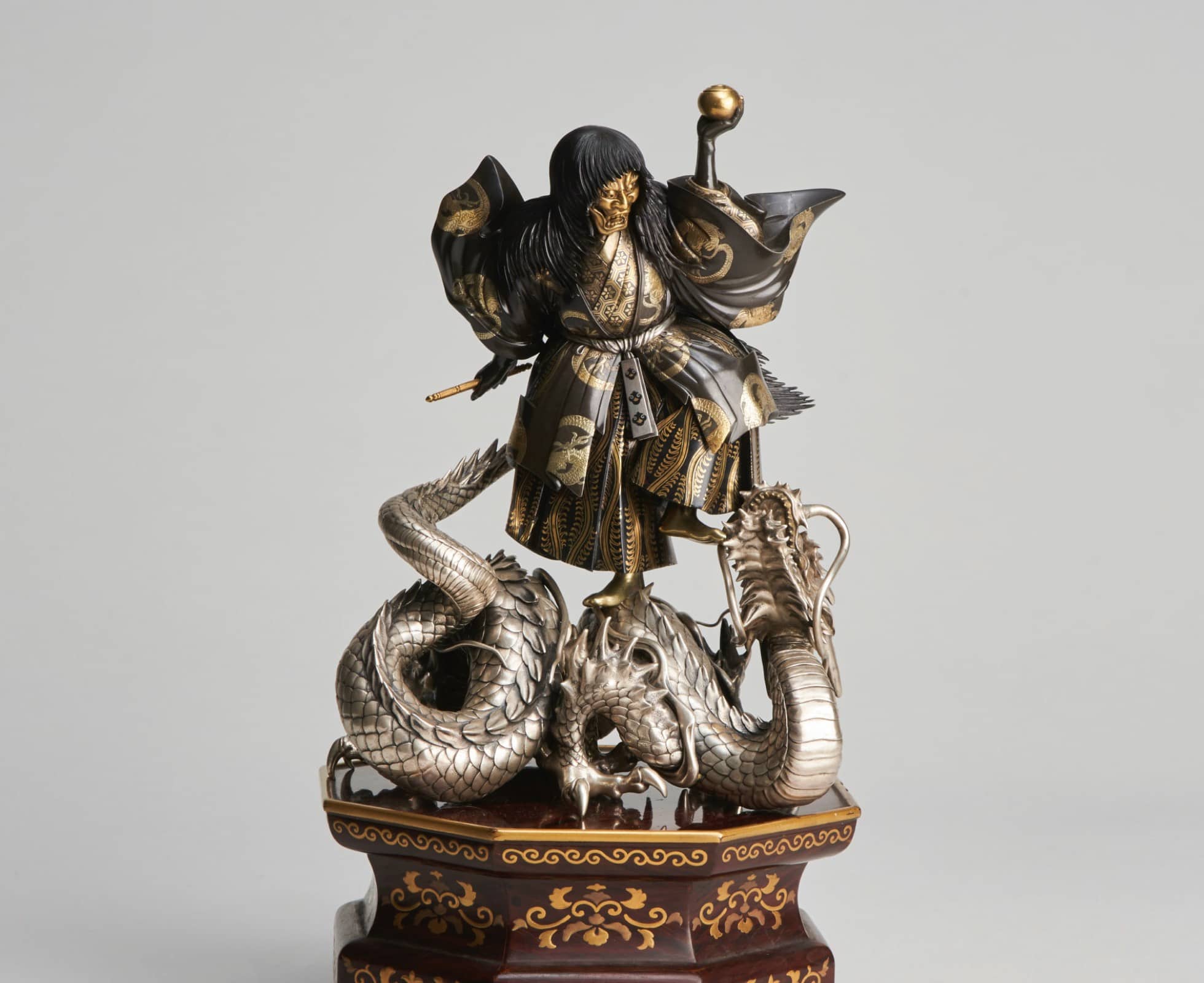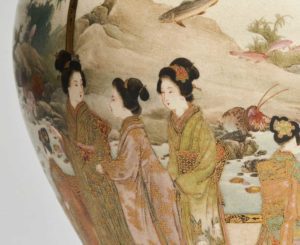In this month’s “Story behind the art”, we are focussing on one stunning piece and the wealth of different materials, techniques, symbolism and craftsmanship that went into creating it.
Signed Oshima Joun, this elaborate bronze and multi-metal basket of seafood is a tour de force of Japanese craftsmanship. It showcases many of the metalwork techniques refined and perfected during the Meiji period (1868-1912).
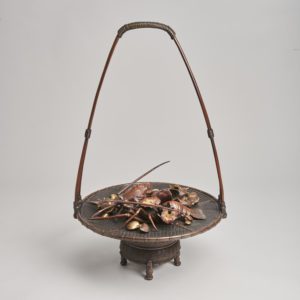
About the artist
The basket is signed with a seal which reads, Ichijoken Joun with kao. Ichijoken being the artist name of Oshima Joun (1858-1940). Born into the family trade of metalworking, along with his brother Oshima Yasutaro (also a skilled artist), Joun became head of the business in 1877. He was a highly skilled bronze caster and by 1879 he had built up the business to include 11 assistants and apprentices all working under him in the studio. He exhibited at the 2nd National Industrial Exposition in 1881 as well as the Paris Exposition in 1900 and the Japan-British Exposition in 1910.

The seal of Oshima Joun
The majority of his work was sold through high level commissioning houses such as Sanseisha, Murakami Heishichi and Honda. Joun was a highly regarded professor at the Tokyo School of Fine Art from 1887 to 1932. Here he passed on his remarkable skills to many students including Eisuke Jomi, Sessei Okazaki, and Suzuki Chokichi.
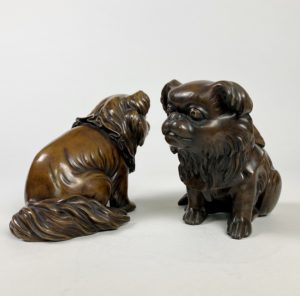
A pair of Japanese chin dogs by celebrated artist Suzuki Chokichi, a pupil of Oshima Joun
Japanese Metal work
Japanese metalwork has always been highly regarded worldwide, especially the use of bronze (an alloy of copper and tin) and the invention of many specific alloys used to give colour and patina to works. The copper based alloys provide a richness not seen in other cultures, today modern day artists are still experimenting with alloy combinations and trying to improve on ancient ones. In this specific work you can see many alloys used to distinguish and add a level of realism to the seafood. Two alloys used which are renowned for their value and beauty in Japan are Shibuchi and Shakudo.
Shakudo is an alloy of gold and copper which can be treated to develop a purpleish-black patina with an almost lacquer like appearance. Shibuichi is an alloy of silver and copper and sometimes gold, which used in different proportions can be treated to develop a grey, green or blue coloured patina. Although it may be at first overlooked when wowed by the seafood, you can see the body and underside of basket itself is possibly the most technically advanced aspect of the sculpture. It is made to mimic a traditional Japanese bamboo basket. It is not cast as one piece but is painstakingly woven from hundreds, (if not thousands) of thin strips of bronze.
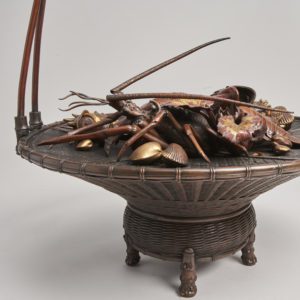
Hundreds of strips of bronze go into making this threaded basket effect.
About the subject
Being an island nation, seafood has always been a huge part of the traditional Japanese diet known as Washoku. The Japanese seldom ate red meat until about 100 years ago when Western cultures influenced the diet and tastes began to change. Seafood is still prevalent in the Japanese diet and this has been attributed to Japan having the best life expectancy in the world.
Spiny Lobster: The Japanese spiny lobster is a poplar high class food in Asia. It is found in the Pacific Ocean and is farmed commercially. It grows to about 30cm and can live for 20 years making it a symbol of longevity.
Horned Turban Shell: Highly prized in Japan, when prepared as sushi the horned turban shell is known as Saze. It is found in the shallow coastal waters off Honshu, Kyushu and Okinawa. They are such a delicacy in Japan that they are now farmed and released into the ocean.
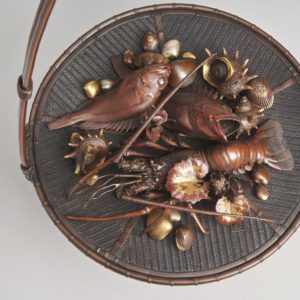
A veritable feast including Japanese Snapper, Asari, Spiny lobster, Horned Turban shell and Wasabi
Japanese Snapper: Also known as Tai, sea bream or Madai the Japanese snapper is an incredibly important fish in Japan, and as such if often depicted in art. There is a festival in Toyohama in Hiroshima dedicated to the fish, it includes 18 meter long fish floats and is the origin of the famous fished shaped taiyaki waffle desert.
Asari: Also known as Maila clams or Japanese littleneck clams, these are a versatile food common in Japanese cuisine. They are admired for the variation in shell pattern and colour, no two are the same.
Wasabi Root and Flower: One of the most famous flavours of Japan, there are records of wasabi being used in Japanese food and as a drug as far back as the 10th century, it was highly valued and could also be used to pay taxes. It grows in the cold north facing mountain streams of Japan and is slow growing, it can only be harvested after 2-4 years when it has attained reasonable size.
=-=-=-=-=
If you would like more information about this piece, please click here
`

